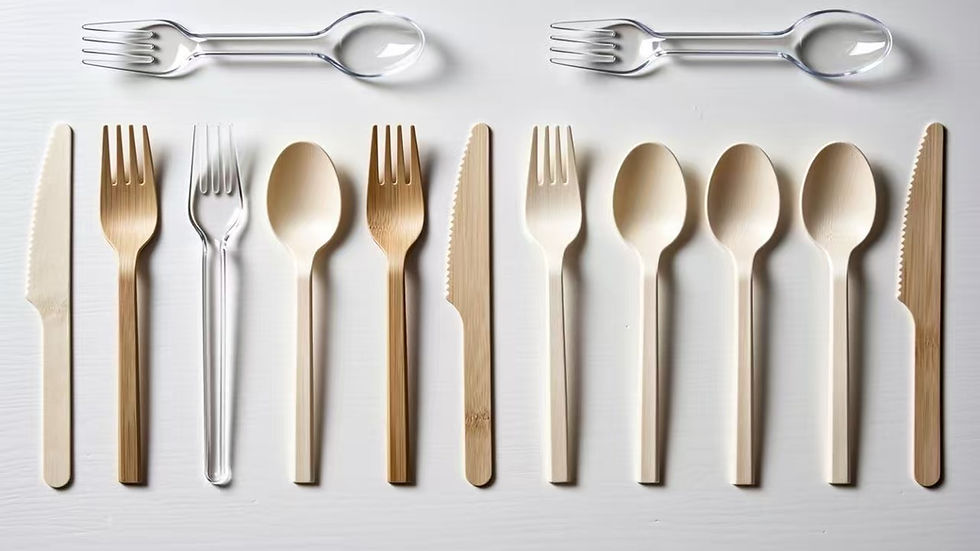The Evolution of Paper Food Packaging: From Traditional to Trendy
- abel zhao
- Sep 19
- 3 min read
The Evolution of Paper Food Packaging: From Traditional to Trendy

Introduction
Paper food packaging has been around for centuries, but its role in today’s food industry has shifted from being a simple necessity to a powerful statement of sustainability and style. In the United States, more restaurants, cafes, and food brands are turning to paper packaging not only for practicality but also for branding and environmental responsibility.

History of Paper Food Packaging
The earliest forms of paper packaging started in China in the 2nd century BC. Paper was used to wrap food and keep it fresh. In the U.S., paper bags became common in grocery stores in the late 19th century. Then they spread to food service. Butcher paper and bakery boxes were early examples. These uses helped create today’s many packaging options.

Traditional Uses and Cultural Significance
For decades, paper has been part of American food culture. Think of classic popcorn bags at movie theaters or deli sandwiches wrapped in wax-coated paper. These items are not just functional. They also carry cultural nostalgia. They remind people of local diners, fairs, and childhood experiences. Unlike plastic, paper feels natural, approachable, and authentic.
Advancements in Materials and Eco-Friendly Innovations
Modern paper food packaging isn’t just simple brown paper anymore. There are many new kinds now:
Grease-proof layer: This natural coating handles oily foods without using plastic.
Water-resistant layer: This strengthened paper keeps wetness from hot or cold food inside.
Microwave-friendly paper: These containers can be heated safely with no bad chemicals.
Eco-certified materials: These packages meet green standards, so earth-friendly users can dispose of them easily.

Durability and Functionality in Modern Use
Small restaurants, coffee shops, and food trucks benefit from paper packaging’s lightweight, stackable, and cost-effective design. Unlike plastic clamshells, paper trays and wraps adapt easily to portion sizes while maintaining sturdiness for on-the-go dining.
Types of Paper Food Packaging
Paper Popcorn Bags
These are a classic choice for theaters and carnivals. They are light but strong.
Paper Sandwich Wraps
These are a popular option for delis and cafes. They are convenient and good for branding.
Disposable Paper Food Trays
These are used at festivals and cafeterias. They are sturdy and hold full meals without being bulky.
Paper Wrap for Food
These wraps work for burgers and pastries. They are flexible and often show brand logos.
Paper Packaging for Food
This includes takeout boxes and compostable containers. They are sustainable and practical.

Design Trends in Paper Food Packaging
Aesthetic Appeal
Consumers now like simple and natural designs. These designs show care for the environment.
Brand Identity and Consumer Perception
Custom-printed wraps and boxes improve a brand's image. They make simple meals seem special.
Environmental Impact and Benefits
Paper food packaging cuts down on single-use plastics. It supports U.S. waste reduction goals. Most paper products are recyclable or compostable. They fit well into the circular economy.

Recycling and Sustainability in the U.S.
Paper is different from plastic. Paper has a strong recycling system. Most U.S. cities accept clean paper packaging in curbside programs. Businesses can use certified compostable paper. This reduces landfill waste. It also follows state environmental rules.
Future of Paper Food Packaging
The future of packaging involves smart integration. QR codes can provide product traceability. Some packaging contains embedded seeds. This allows it to be planted after use. Advanced coatings are also being developed. They extend shelf life without environmental harm. Consumers increasingly demand transparency. Paper packaging effectively combines functionality with brand storytelling.
FAQs
1. Is paper food packaging safe for hot food? Yes. Many paper products now have special coatings. These coatings resist heat and grease.
2. Can paper packaging be microwaved? Some types are microwave-safe. Always check the label first.
3. How is paper packaging recycled in the U.S.? Clean paper packaging is accepted. Most curbside recycling programs take it.
4. What makes paper packaging eco-friendly compared to plastic?
It breaks down naturally. It can turn into compost. It is made from renewable materials.
Conclusion
Paper food packaging has transformed over time. It began as a basic necessity. Now it represents sustainability and brand value. The industry continues to innovate. Strong recycling systems are in place. Consumer preference for paper is growing. These factors show that paper packaging is not just a trend. It is the future of food service.
WhatsApp: +86 13867471335 Email: abel@mana-eco.com



Comments